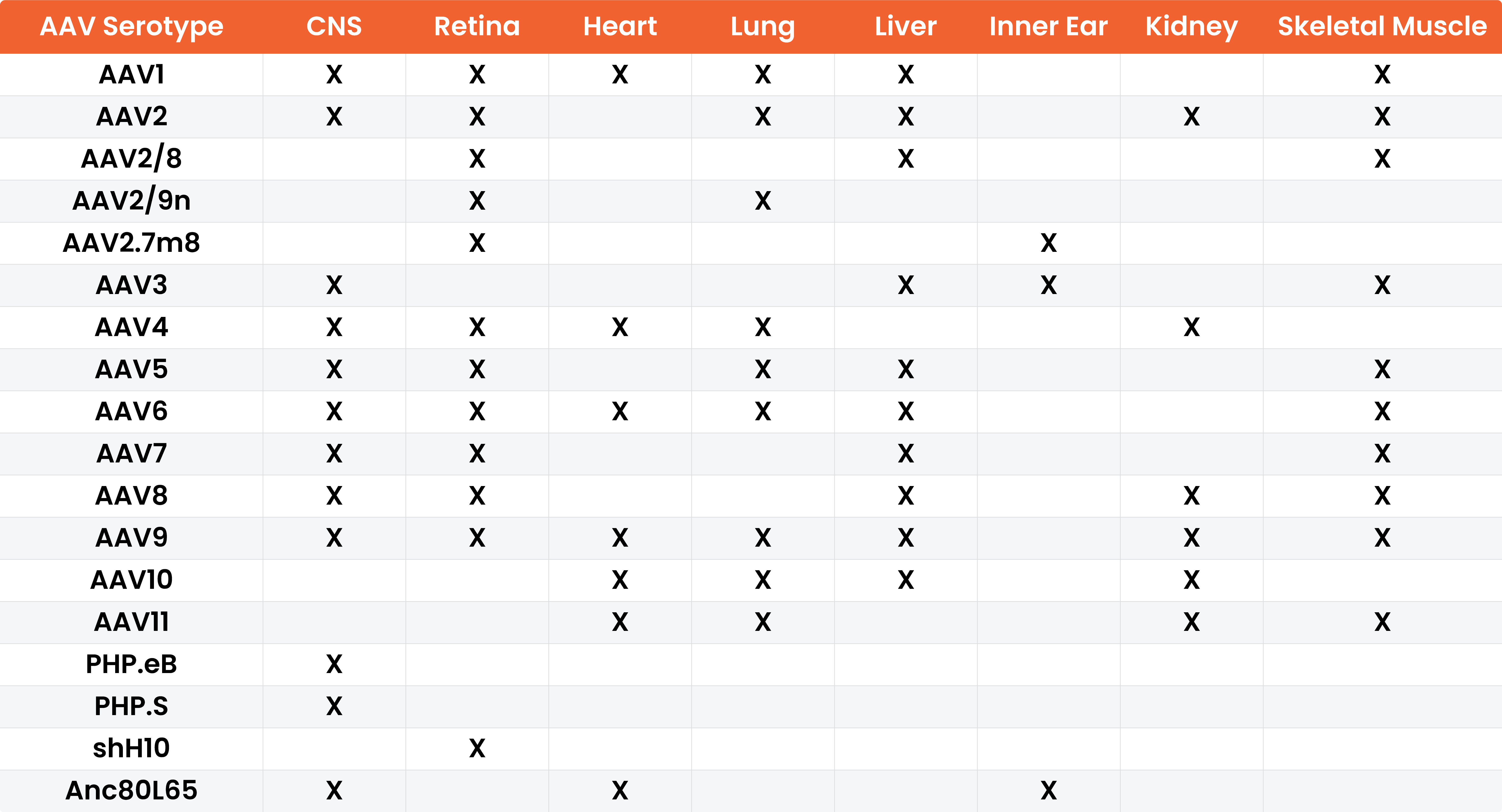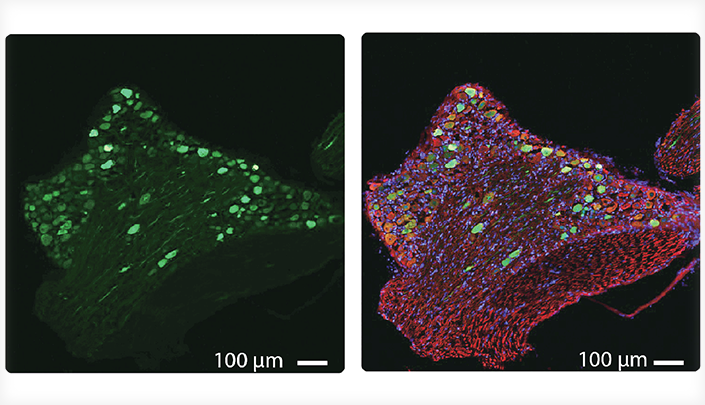AAV Vectors & Virus
As a leader in Adeno-Associated Virus (AAV) technology, abm offers an affordable, comprehensive collection of human, mouse and rat genes cloned into ready-to-use AAV vectors or packaged AAV virus (Serotypes 1-11) for gene over-expression studies within a wide range of host cells. Can't find the AAV construct you're looking for? Contact our team for a custom construct.
Search our Ready-to-Use Libraries: select the dropdowns and enter gene name, symbol or accession number
Search results will be displayed here
Advantages of the AAV System:
- Used as a promising candidate for gene therapy
- Does not elicit significant immune responses in vivo
- Broad tropism - tissue specificity with different AAV serotypes
- No integration into the host genome
- Ability to transduce both proliferating and quiescent cells
- Long-term expression in non-dividing cells
Additional Information
Documents
Top Publications
| 01 | Hypothalamic stem cells control ageing speed partly through exosomal miRNAs. Zhang Y. et al. Nature (2017) doi: 10.1038/nature23282 |
| 02 | Tet1 and Tet2 maintain mesenchymal stem cell homeostasis via demethylation of the P2rX7 promoter. Yang R. et al Nature Communications (2018) doi: 10.1038/s41467-018-04464-6 |
| 03 | Ubiquitin-specific protease 53 promotes osteogenic differentiation of human bone marrow-derived mesenchymal stem cells. Baek D. et al. Cell Death & Disease (2021) doi: 10.1038/s41419-021-03517-x |



